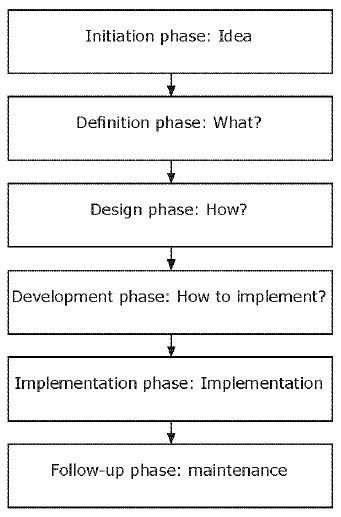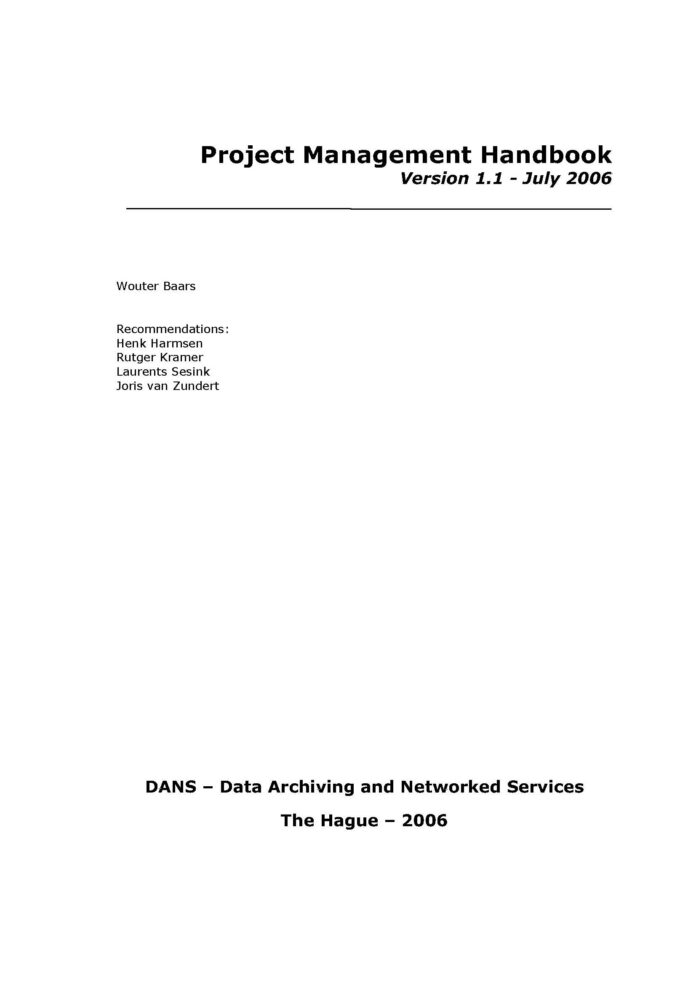This project management handbook is intended for anyone who is involved in or will be involved in projects that take place within or are conducted in association with DANS. The text, however, has been prepared in such a way that it can be used by other organizations, particularly those in the non-profit sector, that use project-based working methods.
The book is comprised of several sections.
The first section (Chapters 1 through 4) provides an overview of project management. These chapters address the theory of the waterfall method, which is applicable to most projects.
The second section of this book (beginning with Chapter 5), addresses ‘cyclical’ forms of project management, which are more appropriate to IT-related projects. These methods are particularly well suited for software development and other creative IT projects. The penultimate chapter addresses the working methods of DANS. This method is a combination of elements from both the waterfall and the cyclical methods.
The last chapter of this handbook discusses how organizations can manage the dynamics of carrying out several projects at once. The most important difficulties are addressed, along with strategies for dealing with these problems.
This document includes a number of standard documents that can be used for directing projects, as well as a number of references to open-source project instruments developed by third parties. A literature list is included at the end of this book for those who wish to delve more deeply into the broad field of project management.
The six phases of project management
This chapter provides a sketch of the traditional method of project management. The model that is discussed here forms the basis for all methods of project management. Later chapters go into more depth regarding a model that is particularly appropriate for IT-related projects.
Dividing a project into phases makes it possible to lead it in the best possible direction. Through this organization into phases, the total workload of a project is divided into smaller components, thus making it easier to monitor.
The following paragraphs describe a phasing model that has been useful in practice. It includes six phases:
- Initiation phase
- Definition phase
- Design phase
- Development phase
- Implementation phase
- Follow-up phase






